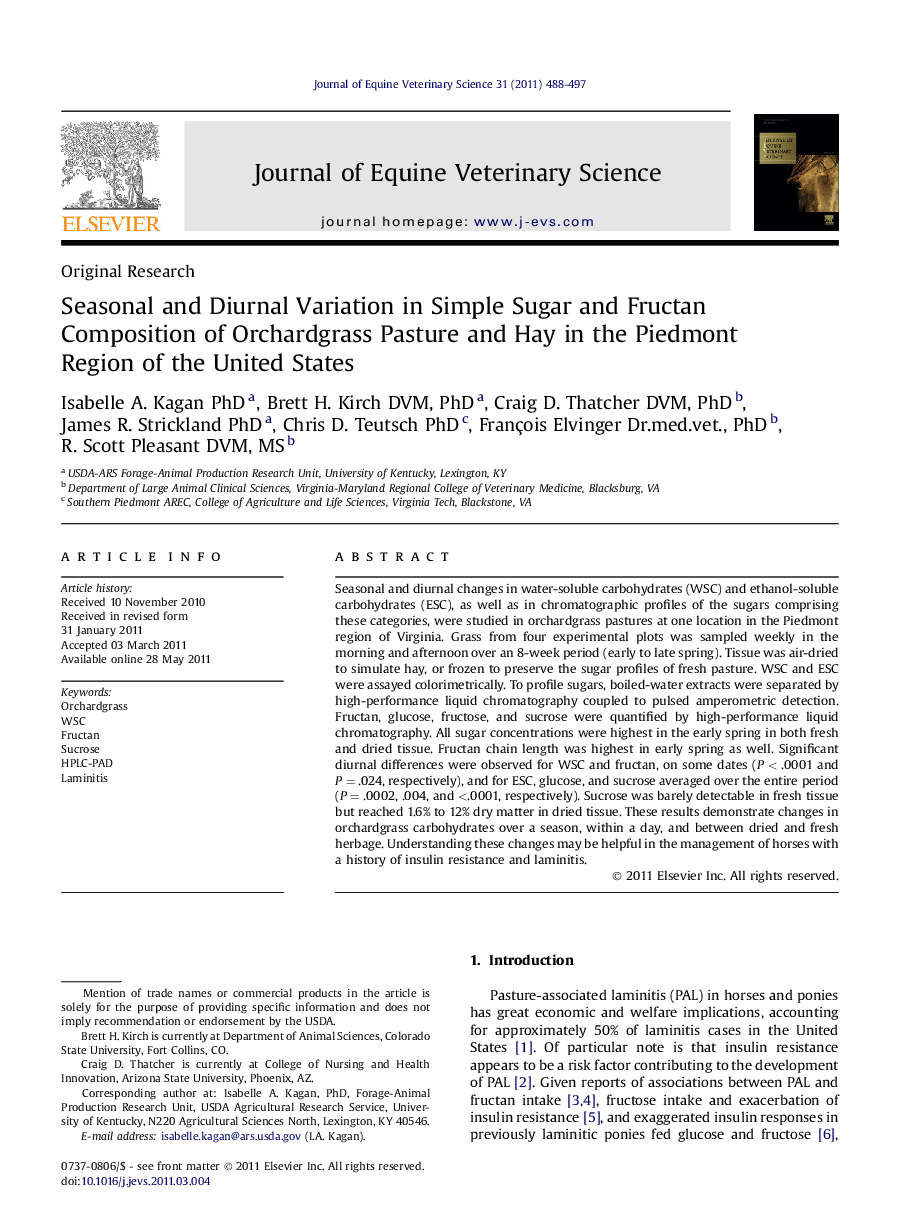| Article ID | Journal | Published Year | Pages | File Type |
|---|---|---|---|---|
| 2395759 | Journal of Equine Veterinary Science | 2011 | 10 Pages |
Seasonal and diurnal changes in water-soluble carbohydrates (WSC) and ethanol-soluble carbohydrates (ESC), as well as in chromatographic profiles of the sugars comprising these categories, were studied in orchardgrass pastures at one location in the Piedmont region of Virginia. Grass from four experimental plots was sampled weekly in the morning and afternoon over an 8-week period (early to late spring). Tissue was air-dried to simulate hay, or frozen to preserve the sugar profiles of fresh pasture. WSC and ESC were assayed colorimetrically. To profile sugars, boiled-water extracts were separated by high-performance liquid chromatography coupled to pulsed amperometric detection. Fructan, glucose, fructose, and sucrose were quantified by high-performance liquid chromatography. All sugar concentrations were highest in the early spring in both fresh and dried tissue. Fructan chain length was highest in early spring as well. Significant diurnal differences were observed for WSC and fructan, on some dates (P < .0001 and P = .024, respectively), and for ESC, glucose, and sucrose averaged over the entire period (P = .0002, .004, and <.0001, respectively). Sucrose was barely detectable in fresh tissue but reached 1.6% to 12% dry matter in dried tissue. These results demonstrate changes in orchardgrass carbohydrates over a season, within a day, and between dried and fresh herbage. Understanding these changes may be helpful in the management of horses with a history of insulin resistance and laminitis.
